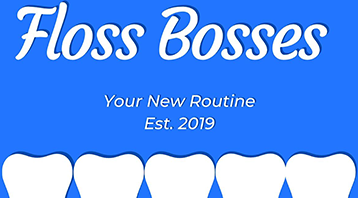When discussing health, we often think about our hearts, lungs, and bones. But what about the muscles in our face and mouth? These muscles play a crucial role in our daily lives, from eating to speaking.
However, sometimes things can go awry, leading to what’s known as orofacial myology disorders (OMDs). Don’t worry if you have heard of them; today, we’re diving deep into what you should know about OMDs.
What Are Orofacial Myofunctional Disorders?
Let’s break it down. “Oro” refers to the mouth, “facial” refers to the face, “myo” means muscle, and “functional” refers to how things work. So, orofacial myofunctional disorders are problems with how the muscles in your mouth and face function.
What Causes Orofacial Myofunctional Disorders?
There isn’t a single cause for OMDs; instead, orofacial myology disorders near you can result from various factors:
Thumb Sucking: Habitual thumb sucking can lead to changes in the muscles and bones of the face and mouth.
Tongue Thrusting: When someone thrusts their tongue forward against the teeth while swallowing, it can affect the positioning of the teeth and jaw.
Breathing Difficulties: Issues like chronic mouth breathing can impact the development of facial muscles and lead to OMDs.
Genetics: Sometimes, OMDs can run in families, suggesting a genetic component.
Incorrect Oral Habits: Improper tongue posture or chewing patterns can contribute to OMDs.
Signs and Symptoms
OMDs can manifest in various ways, including:
- Lisping or trouble pronouncing specific sounds are examples of speech issues.
- Open mouth posture, where the mouth remains open even when at rest.
- Difficulty swallowing or chewing.
- Malocclusion is the term for tooth misalignment.
- Facial pain or tension.
Diagnosis and Treatment
If you suspect you or your child may have an OMD, it’s essential to consult with a healthcare professional, typically a speech-language pathologist or an orofacial myofunctional therapist. They will assess your symptoms and may recommend myofunctional therapy to address the underlying issues.
Treatment for OMDs often involves exercises and techniques aimed at retraining the muscles of the face and mouth. It may include tongue exercises, breathing exercises, and proper oral posture training. In some cases, orthodontic treatment may also be recommended to correct any dental issues resulting from the OMD.
Importance of Early Intervention
Early detection and intervention are crucial when it comes to OMDs. Addressing these issues early on can prevent complications such as dental problems or speech difficulties later in life. So, if you notice any signs or symptoms of an OMD in yourself or your child, don’t hesitate to seek professional help.
Prevention
While not all OMDs can be prevented, there are steps you can take to reduce the risk:
- Encourage oral habits from an early age, such as teaching children to swallow correctly and discouraging thumb-sucking.
- Seek treatment for breathing difficulties, such as allergies or nasal congestion, to prevent chronic mouth breathing.
- Schedule regular dental check-ups to monitor your oral health and catch any issues early on.
Summarizing Words
Orofacial myofunctional disorders may not be as well-known as other health conditions, but they can have a significant impact on daily life. By understanding the causes, signs, and treatment options for OMDs, you can take proactive steps to address these issues and improve oral health and well-being.
Remember, if you have any concerns about OMDs, don’t hesitate to contact a dental hygienist in Edmonton for guidance and support. Floss Bosses, experts in orofacial myofunctional disorders, provide optimal guidance, improving oral function. Our specialized knowledge and techniques address issues like swallowing, speech, and breathing for enhanced health.

